Forest cover percentage drives the peak biting time of Nyssorhynchus darlingi (Diptera: Culicidae) in the Brazilian Amazon
- PMID: 38807105
- PMCID: PMC11131226
- DOI: 10.1186/s12936-024-04984-1
Forest cover percentage drives the peak biting time of Nyssorhynchus darlingi (Diptera: Culicidae) in the Brazilian Amazon
Abstract
Background: Deforestation is an important driver of malaria dynamics, with a relevant impact on mosquito ecology, including larval habitat availability, blood-feeding behaviour, and peak biting time. The latter is one of several entomological metrics to evaluate vectorial capacity and effectiveness of disease control. This study aimed to test the effect of forest cover percentage on the peak biting time of Plasmodium-uninfected and infected Nyssorhynchus darlingi females.
Methods: Mosquitoes were captured utilizing human landing catch (HLC) in the peridomestic habitat in field collections carried out in the wet, wet-dry transition, and dry seasons from 2014 to 2017 in areas with active malaria transmission in Amazonian Brazil. The study locations were in rural settlements in areas with the mean annual malaria parasite incidence (Annual Parasite Incidence, API ≥ 30). All Ny. darlingi females were tested for Plasmodium spp. infection using real time PCR technique. Forest cover percentage was calculated for each collection site using QGIS v. 2.8 and was categorized in three distinct deforestation scenarios: (1) degraded, < 30% forest cover, (2) intermediate, 30-70% forest cover, and (3) preserved, > 70% forest cover.
Results: The highest number of uninfected female Ny. darlingi was found in degraded landscape-sites with forest cover < 30% in any peak biting time between 18:00 and 0:00. Partially degraded landscape-sites, with (30-70%) forest cover, showed the highest number of vivax-infected females, with a peak biting time of 21:00-23:00. The number of P. falciparum-infected mosquitoes was highest in preserved sites with > 70% forest cover, a peak biting at 19:00-20:00, and in sites with 30-70% forest cover at 22:00-23:00.
Conclusions: Results of this study show empirically that degraded landscapes favour uninfected Ny. darlingi with a peak biting time at dusk (18:00-19:00), whereas partially degraded landscapes affect the behaviour of Plasmodium-infected Ny. darlingi by shifting its peak biting time towards hours after dark (21:00-23:00). In preserved sites, Plasmodium-infected Ny. darlingi bite around dusk (18:00-19:00) and shortly after (19:00-20:00).
Keywords: Deforestation; Entomological surveillance; Land use change; Malaria; Mosquito behavior.
© 2024. The Author(s).
Conflict of interest statement
The authors declare no competing interests.
Figures

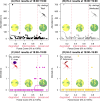
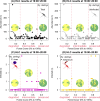
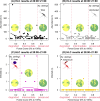
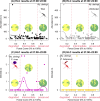
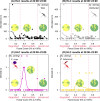
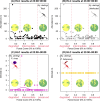
Similar articles
-
Vector role and human biting activity of Anophelinae mosquitoes in different landscapes in the Brazilian Amazon.Parasit Vectors. 2021 May 6;14(1):236. doi: 10.1186/s13071-021-04725-2. Parasit Vectors. 2021. PMID: 33957959 Free PMC article.
-
Effect of spatiotemporal variables on abundance, biting activity and parity of Nyssorhynchus darlingi (Diptera: Culicidae) in peri-Iquitos, Peru.Malar J. 2024 Apr 19;23(1):112. doi: 10.1186/s12936-024-04940-z. Malar J. 2024. PMID: 38641572 Free PMC article.
-
Vector competence, vectorial capacity of Nyssorhynchus darlingi and the basic reproduction number of Plasmodium vivax in agricultural settlements in the Amazonian Region of Brazil.Malar J. 2019 Apr 4;18(1):117. doi: 10.1186/s12936-019-2753-7. Malar J. 2019. PMID: 30947726 Free PMC article.
-
Higher risk of malaria transmission outdoors than indoors by Nyssorhynchus darlingi in riverine communities in the Peruvian Amazon.Parasit Vectors. 2019 Jul 29;12(1):374. doi: 10.1186/s13071-019-3619-0. Parasit Vectors. 2019. PMID: 31358033 Free PMC article.
-
Anthropogenic landscape decreases mosquito biodiversity and drives malaria vector proliferation in the Amazon rainforest.PLoS One. 2021 Jan 14;16(1):e0245087. doi: 10.1371/journal.pone.0245087. eCollection 2021. PLoS One. 2021. PMID: 33444320 Free PMC article.
References
-
- Kirby KR, Laurance WF, Albernaz AK, Schroth G, Fearnside PM, Bergen S, et al. The future of deforestation in the Brazilian Amazon. Futures. 2006;38:432–453. doi: 10.1016/j.futures.2005.07.011. - DOI
MeSH terms
Grants and funding
LinkOut - more resources
Full Text Sources
Miscellaneous

